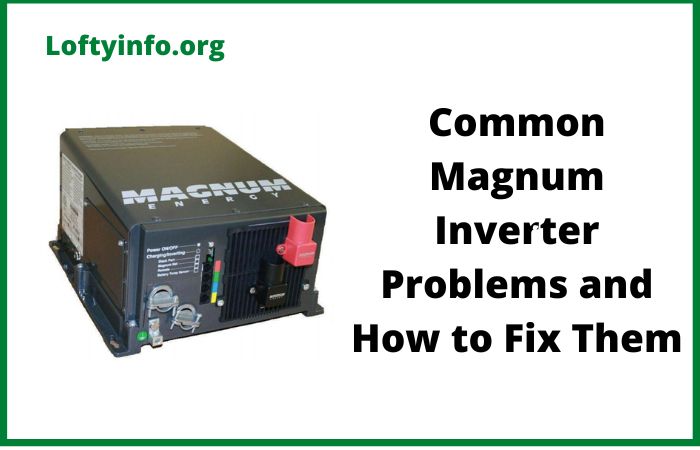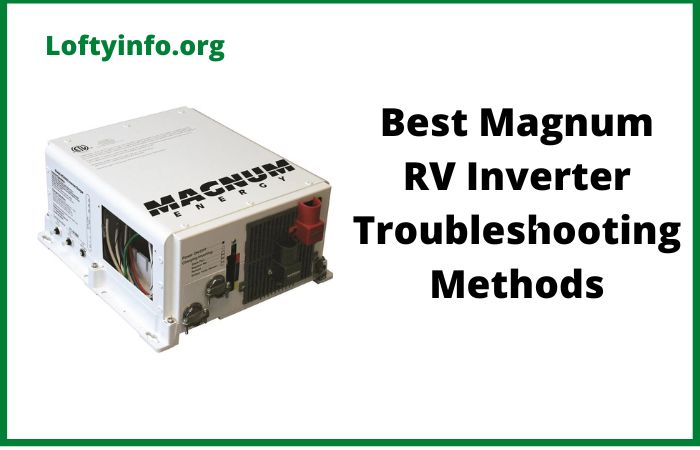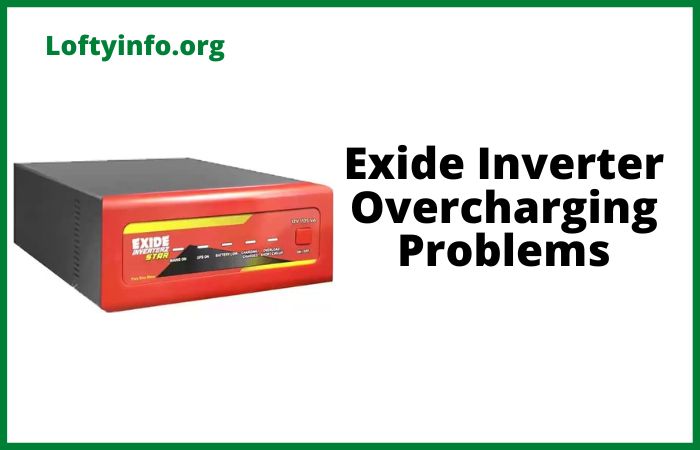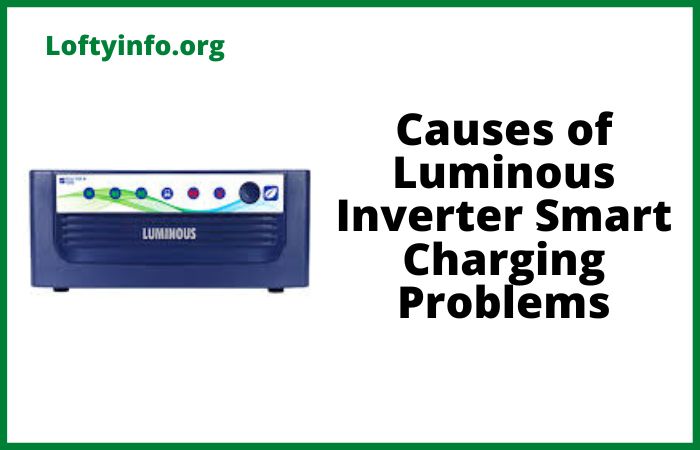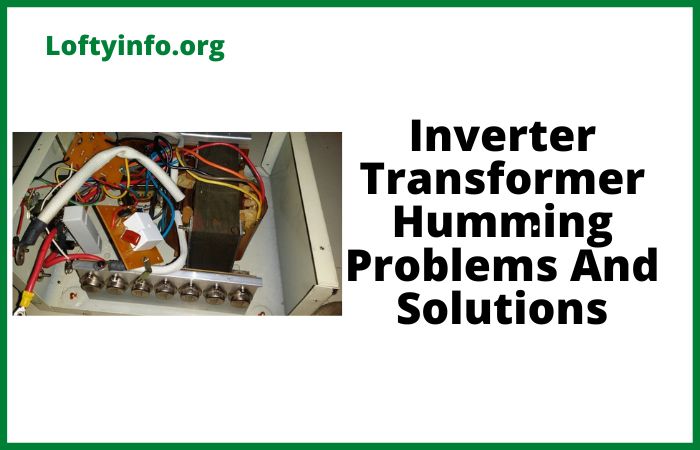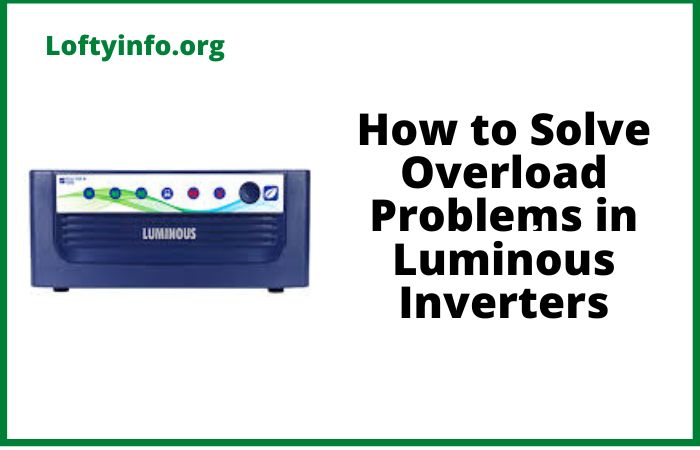Common Magnum Inverter Problems and How to Fix Them
When your Magnum inverter starts acting up, it can be frustrating and potentially costly if not addressed properly.
As a leading brand in power conversion technology, Magnum inverters are generally reliable but like any electronic device, they can experience issues over time.
This comprehensive guide will walk you through the most common Magnum inverter problems and provide step-by-step solutions that even beginners can understand.
Understanding Your Magnum Inverter Before Troubleshooting
Before diving into specific problems, it’s important to understand what an inverter does.
Your Magnum inverter converts 12V, 24V or 48V DC power from batteries into 120V or 240V AC power that your household appliances can use.
When problems arise, they typically fall into categories related to power conversion, overheating, battery communication or internal component failures.
Common Magnum Inverter Problems and How to Fix Them
Problem 1: Magnum Inverter Not Turning On
Symptoms and Diagnosis
One of the most common issues users face is when their Magnum inverter simply won’t power up.
You’ll notice no LED indicators, no display readings and complete silence from the unit.
Root Causes
This problem typically stems from inadequate power supply, blown fuses or faulty connections.
The inverter requires a minimum voltage to initialize its internal systems and if this threshold isn’t met, it will remain dormant as a protective measure.
Step-by-Step Solution
- Check battery voltage: Use a multimeter to measure your battery bank voltage.
For a 12V system, you need at least 10.5V; for 24V systems, minimum 21V for 48V systems, minimum 42V.
- Inspect all fuses: Locate the main DC fuse (usually rated between 200-400 amps depending on your model) and check for continuity.
A blown fuse will show infinite resistance on your multimeter.
- Examine cable connections: Loose or corroded connections can prevent proper power flow.
Clean battery terminals with a wire brush and ensure all connections are tight using the manufacturer’s recommended torque specifications.
- Test the remote switch: If your inverter uses a remote on/off switch, bypass it temporarily by connecting the remote terminals directly together.
Problem 2: Magnum Inverter Overheating and Thermal Shutdown
Symptoms and Diagnosis
Your inverter may shut down unexpectedly, display high temperature warnings or feel excessively hot to the touch.
The cooling fans may run constantly or not at all.
Root Causes
Overheating occurs when the inverter’s internal temperature exceeds safe operating limits, typically around 140-160°F (60-71°C).
This happens due to poor ventilation, high ambient temperatures or internal component degradation causing inefficient operation.
Detailed Solution Process
- Improve ventilation: Ensure at least 6 inches of clearance on all sides of your inverter.
Install additional fans if necessary, creating a cross-flow ventilation pattern.
- Clean internal components: Power down and disconnect the inverter then carefully remove the cover.
Use compressed air to blow out dust from heat sinks, transformers and circuit boards.
Pay special attention to the cooling fan intake and exhaust areas.
- Check fan operation: With the inverter running under load, verify that all cooling fans are spinning freely.
Replace any seized or noisy fans immediately.
- Monitor ambient temperature: Inverters should operate in environments below 104°F (40°C).
If installation location exceeds this, consider relocating or adding environmental cooling.
Problem 3: Low Battery Voltage Alarms and Premature Shutdowns
Symptoms and Diagnosis
The inverter frequently displays low battery warnings or shuts down even when batteries appear to have adequate charge.
This problem becomes more noticeable under heavy loads.
Root Causes
This issue typically results from voltage drop under load, aging batteries with high internal resistance or incorrect low voltage disconnect (LVD) settings.
Battery cables that are too small for the current draw can also cause significant voltage drops.
Comprehensive Fix Strategy
- Perform load testing: Use a proper battery load tester to check each battery’s capacity under actual working conditions.
A battery might show 12.6V at rest but drop to 10V under load if it’s failing.
- Upgrade battery cables: Calculate the proper cable size based on your inverter’s maximum current draw and cable length.
For a 3000W inverter on a 12V system, you’ll need approximately 250 amps of current, requiring 4/0 AWG cable for runs under 10 feet.
- Adjust LVD settings: Access your inverter’s programming menu and set the low voltage disconnect to appropriate levels.
Conservative settings are 11.0V for 12V systems, 22.0V for 24V systems and 44.0V for 48V systems.
- Implement battery bank equalization: If using flooded lead-acid batteries, perform monthly equalization charges to prevent sulfation and maintain balanced cell voltages.
Problem 4: Magnum Inverter Producing Distorted or Noisy AC Output
Symptoms and Diagnosis
Connected devices may run roughly, produce unusual noises or display “modified sine wave” sensitivity issues.
Sensitive electronics might malfunction or refuse to operate.
Root Causes
Output waveform distortion can result from failing output transformers, damaged switching transistors (MOSFETs) or degraded filtering capacitors.
Environmental factors like moisture infiltration can also affect waveform quality.
Technical Solution Approach
- Measure output waveform: Using an oscilloscope, check the AC output for proper sine wave formation.
The waveform should be smooth and symmetrical without excessive harmonics.
- Test total harmonic distortion (THD): A quality inverter should maintain THD below 3%.
Higher values indicate internal component issues requiring professional repair.
- Check output voltage stability: Monitor AC voltage under varying loads.
Voltage should remain within ±5% of nominal values (114V-126V for 120V nominal).
- Inspect internal components: Look for swollen capacitors, burnt resistors or damaged transformers.
These require replacement by qualified technicians.
Problem 5: Charging System Failures in Inverter-Charger Models
Symptoms and Diagnosis
Battery charging stops working, charges too slowly, or overcharges batteries.
The AC input may not transfer properly to charge mode when shore power is available.
Root Causes
Charging problems often stem from faulty charge control circuits, damaged transformers or incorrect charging parameter settings.
Age-related component drift can also cause charging irregularities.
Systematic Repair Process
- Verify AC input power: Confirm proper voltage and frequency at the AC input terminals.
Most Magnum units require 108-132V AC input at 60Hz.
- Test charging output: With AC input connected, measure DC charging voltage at the battery terminals.
It should match your battery type’s charging profile (typically 13.8V-14.4V for 12V lead-acid batteries).
- Review charging settings: Access the inverter’s menu system and verify correct settings for battery type (Flooded, AGM, Gel, Lithium), charging current limits and absorption/float voltages.
- Check for AC transfer relay issues: The internal transfer relay may stick or fail, preventing proper switching between inverter and charger modes.
Problem 6: Ground Fault and Arc Fault Protection Triggering
Symptoms and Diagnosis
The inverter shuts down with fault codes indicating ground faults or arc faults, even when no apparent problems exist with connected loads.
Root Causes
These safety systems protect against electrical hazards but can trigger falsely due to moisture, damaged wiring or electromagnetic interference. Aging components may become overly sensitive.
Resolution Strategy
- Perform insulation resistance testing: Using a megohmmeter, test insulation resistance between all conductors and ground. Readings should exceed 1 megohm.
- Inspect all wiring: Look for damaged insulation, pinched wires or moisture infiltration in junction boxes and conduit systems.
- Check load connections: Ensure all connected appliances have proper grounding and aren’t creating ground loops or fault currents.
- Adjust sensitivity settings: If available in your model, try reducing fault protection sensitivity while maintaining safe operation.
Problem 7: Communication Errors with Battery Monitors and Remote Displays
Symptoms and Diagnosis
Remote control panels show communication errors, battery monitoring becomes inaccurate or network connectivity fails with monitoring systems.
Root Causes
Communication issues typically result from damaged data cables, incorrect network settings or electromagnetic interference affecting digital signals.
Technical Fix Procedure
- Test communication cables: Check continuity and proper wiring of all data connections using appropriate communication protocols (RS-485, CAN bus, etc.).
- Verify network settings: Ensure proper device addressing, baud rates and protocol settings match between all connected devices.
- Eliminate interference sources: Route communication cables away from high-current AC and DC wiring to prevent electromagnetic interference.
- Update firmware: Check for available firmware updates that might resolve communication bugs or compatibility issues.
Problem 8: Power Factor and Efficiency Issues
Symptoms and Diagnosis
Higher than expected power consumption, reduced battery runtime or utility complaints about power factor when using grid-tie features.
Root Causes
Efficiency problems often develop gradually as internal components age, switching frequencies drift or cooling systems become less effective.
Poor power factor can result from reactive loads or inverter control issues.
Advanced Optimization Solutions
- Monitor input/output power: Compare DC input power with AC output power to calculate overall efficiency.
Quality inverters should maintain 85-95% efficiency under normal loads.
- Analyze load characteristics: Ensure connected loads are appropriate for your inverter’s capabilities.
- Inductive loads require additional consideration for reactive power.
- Optimize operating points: Many inverters operate most efficiently at 50-80% of rated capacity.
Consider load management to maintain optimal operating ranges.
- Implement power factor correction: For installations with significant reactive loads, consider adding power factor correction capacitors to improve overall system efficiency.
Preventive Maintenance Tips for Long-Term Reliability
Regular maintenance prevents most common problems and extends inverter life:
- Monthly inspections: Check all connections, clean terminals, and verify proper ventilation
- Quarterly testing: Perform load tests and verify all safety systems function correctly
- Annual service: Have qualified technicians inspect internal components and update firmware
- Environmental monitoring: Track temperature, humidity and vibration levels in installation areas
When to Call Professional Help
While many issues can be resolved through careful troubleshooting, certain problems require professional attention:
- Internal component replacement
- Firmware corruption or hardware failure
- Warranty-covered repairs
- Complex electrical system integration issues
Conclusion
Understanding and addressing common Magnum inverter problems doesn’t have to be overwhelming.
By following systematic troubleshooting approaches and maintaining your equipment properly, you can ensure reliable power conversion for years to come.
Remember that safety should always be your first priority when working with high-current electrical systems.
Regular maintenance and prompt attention to developing issues will keep your Magnum inverter operating at peak performance while avoiding costly emergency repairs.
When in doubt, consult with qualified professionals to ensure safe and effective solutions.
